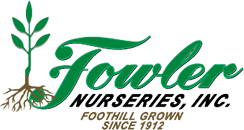We make sure your success begins with a quality tree and careful planting.
Determining Appropriate Trees per Acre
The Best Time to Plant
1. Bareroot
Preparing the Site
Transporting & Caring for Trees (Before Planting)
Bareroot
Potted
Soil Moisture Potted
General field preparation should be the same as planting bare root trees, but maintenance after planting potted trees is different, the significant factor being water. It is essential when planting a potted tree that the soil moisture be at field capacity BEFORE the tree is even planted. If the soil is not adequately moist, the soil will pull water from the root ball, causing the tree to dry, hindering root growth and potentially killing the tree. Even though the soil is significantly wet at planting, tanking-in trees is essential to settle the soil and ensure there are no air pockets surrounding the root ball. Root to soil contact is critical.
Be sure to monitor the moisture in the underground root ball. If field soil begins to dry out too much, the potted plant root ball will be too dry. In late summer or fall plantings, potted tree roots will only slowly grow outside the potting mix they were in, although water demands of the tree can be high. Since the roots are in such a small volume of soil, there is little room for error in irrigation. Unlike bare-root trees, irrigation should be aimed at wetting not only the soil around the tree but also watering the root ball. Monitor the root growth and moisture level by carefully digging down to assess whether the roots have begun to grow into the field soil, beyond the potting mix. If roots have not begun to grow outside the root ball, irrigation must keep the root ball moist as well as the surrounding native soil as it can dry up easily.
Planting Potted
Be sure to plant the root ball 1”-2” below the surface of the soil and that the planting hole is deep enough not to bend or break the root ball. It is not recommended to break up any part of the root ball before planting. Injury to the roots can hinder the plant’s success and encourage disease entrance. Slide the plant out of the pot immediately before planting. Removing the pot any time before that may leave the roots vulnerable to damage and drying out. Fowler Nurseries does not advise the application of any fertilizer, but if any fertilizer is used, be sure that it does not touch the roots. This can cause burning and permanent damage to the plant. Help us recycle plastic trays. Return them to your sales rep!
Digging the Hole
Planting
Broken or damaged roots should be trimmed off. No additional pruning is recommended. Do not prune the roots to fit the hole; instead, dig the hole to fit the roots. Remember that the roots are important because they feed and support the rest of the tree. Always remove the tree label, it can girdle the tree. Backfill the hole with the most friable soil available, and avoid large clods. It’s essential not to use soil that may have been treated with a herbicide when backfilling around the roots. Be sure the bud union is well above the ground level and pointed southeast. It is also a good rule to plant the tree no deeper than it was grown in the nursery. We do not recommend the use of fertilizer or manure in the hole at planting time. Where prevailing winds are a problem, plant trees leaning slightly into the wind.
2. Potted
Tanking in the Roots
Protecting Young Trees
It is critical that some form of sunburn protection be applied immediately after planting. Our favorite is the use of a coated paper tree sleeve, which Fowler Nurseries now provides to growers at cost. Contact your Field Representative for more details. Measuring about 18 inches high, the tree sleeve can be easily slipped over the tree after planting. It will help protect the young tree from sunburn, rodents and herbicide sprays. You may also paint the tree from ground level to top of trunk with a mixture of one part water and one part white interior latex paint. Remember to reapply as needed. Sunburn of trees at the top edge of the tree sleeve can occur. We advise painting newly-planted trees around the top of the sleeve.
Pruning
The most important cultural practice fruit growers can perform is the art of proper training and pruning of trees. Training and pruning are necessary for healthy, productive trees. A tree’s first heading cut will determine the height of the limbs and the trunk. Most growers head their trees at 28 to 36 inches. Inspect each tree to determine if there are live buds in the area below the heading cut. Sometimes there are no buds in this area, especially on yearling trees; these buds may have already grown into branches. If the latter is true, leave two or three of these branches with two or more buds on them when pruning. We do not recommend cutting limbs flush if you intend on using that position for a future limb.
